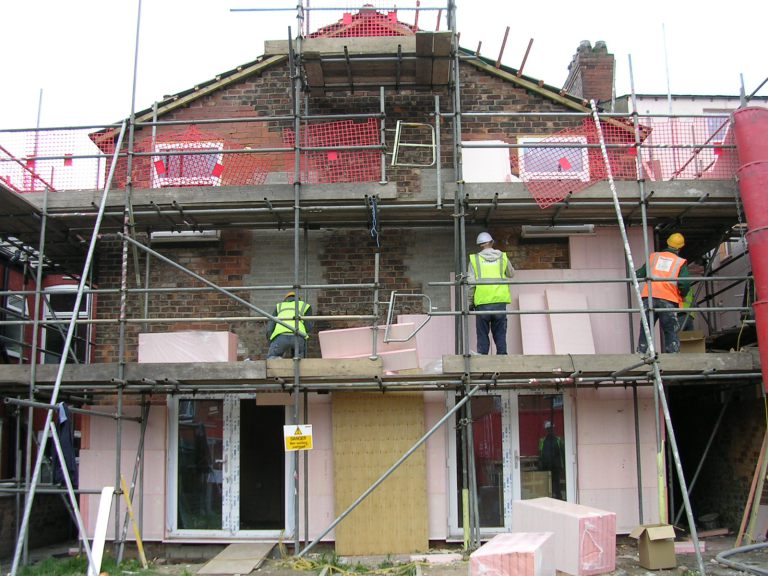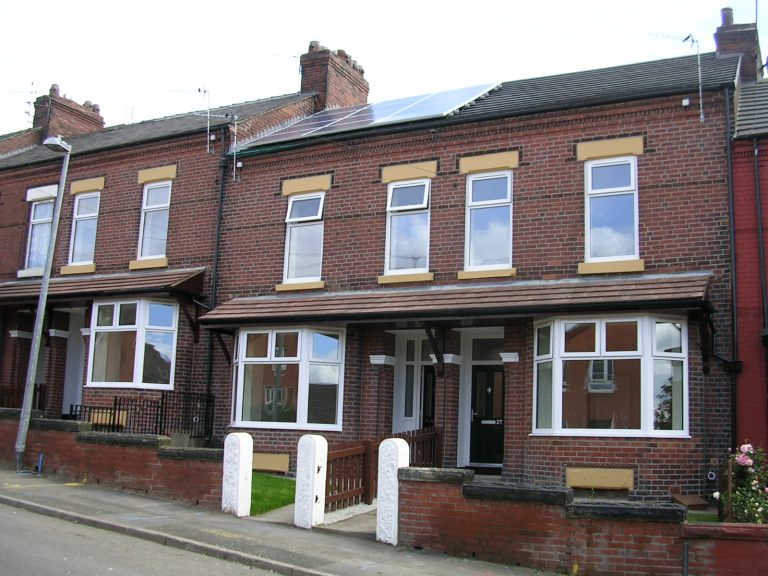Retrofit-led regeneration in Greater Manchester
One statistic I have used a lot in the last 6 years is that if we are to meet the target of reducing CO2 emissions by 80% of 1990 levels by 2050, we need to refurbish one home every 45 seconds. Yes, you read that right, one home every forty-five seconds! While this is an important statistic to get people to sit up and take notice, we now need to move the discussion on from what needs to be done, to how it can be done, and which barriers we need to overcome.
On 21 March 2018, the Mayor of Greater Manchester, Andy Burnham, will be holding a green summit setting out his vision for a carbon neutral Greater Manchester.
In the lead up to this, I attended an insightful workshop in Manchester with delegates from the ten local authorities that make up the Greater Manchester Combined Authority as well as delegates from the UKGBC and the Energy Saving Trust, among others. This was to discuss the need for quality domestic retrofit projects in the UK and to inform the Mayor of Greater Manchester on what needs to be included in his green vision for Greater Manchester.
A common and recurring theme from the workshop was the need for high quality retrofit projects that are done on a large scale, using a holistic approach, which doesn’t just focus on energy efficiency.
It is not just the energy performance of the homes that important in a retrofit. Installing energy efficiency measures is a great opportunity to improve the health and wellbeing of the occupants by ensuring factors such as daylighting, ventilation and security are improved.
What was also apparent from the discussion was the need to perform ‘deep’ retrofits to existing homes, at a community scale to bring them up to the highest possible energy efficiency standard. This is to make sure we meet our 2050 targets without having to retrofit the same homes multiple times.
To achieve the retrofitting at this scale, collaboration between local authorities across the UK and a regular long term funding mechanism need to be in place. Having a long-term mechanism in place, means a level of trust would be developed between the product manufacturers and the householders, to ensure that retrofit works can be done to their homes. This will also generate interest among the local community for work to be done on their homes and to contribute to the local economy.
One final outcome from the workshop was that technical standard needs to be used on retrofit projects, to make sure the required performance will be met in practice, and that the retrofit itself is of a high quality.
Overall, the workshop was positive about what can be done to improve the quality and energy performance of existing homes, and that there is a place for standards such as BREEAM, Passivhaus and EnergieSprong to help drive these improvements forward.
One other key theme from the workshop is a need for a joined up approach to retrofit and a common standard to work to. One such scheme is BREEAM Domestic Refurbishment.
BREEAM Domestic Refurbishment is a third-party independent certification standard that assesses the sustainability of home retrofit projects using a holistic approach. This scheme covers issues ranging from health and wellbeing of the occupants to the materials used in the refurbishment as well as the energy efficiency of the home. Since the launch in 2012, over 2,800 homes have been certified post refurbishment at the time of writing. More information is available here: https://www.breeam.com/discover/technical-standards/refurbishment-and-fit-out/
An independent review of Consumer Advice, Protection, Standards and Enforcement for Energy Efficiency and Renewable E443pxnergy was published in December 2016. The key recommendations from this review is centred around a quality mark for energy efficiency measures and technical code of practice and standards for their installation, as well as protection for the consumer. More information on this, including the full report, is available at www.eachhomecounts.com
[edit] Related articles on Designing Buildings Wiki
Featured articles and news
RTPI leader to become new CIOB Chief Executive Officer
Dr Victoria Hills MRTPI, FICE to take over after Caroline Gumble’s departure.
Social and affordable housing, a long term plan for delivery
The “Delivering a Decade of Renewal for Social and Affordable Housing” strategy sets out future path.
A change to adoptive architecture
Effects of global weather warming on architectural detailing, material choice and human interaction.
The proposed publicly owned and backed subsidiary of Homes England, to facilitate new homes.
How big is the problem and what can we do to mitigate the effects?
Overheating guidance and tools for building designers
A number of cool guides to help with the heat.
The UK's Modern Industrial Strategy: A 10 year plan
Previous consultation criticism, current key elements and general support with some persisting reservations.
Building Safety Regulator reforms
New roles, new staff and a new fast track service pave the way for a single construction regulator.
Architectural Technologist CPDs and Communications
CIAT CPD… and how you can do it!
Cooling centres and cool spaces
Managing extreme heat in cities by directing the public to places for heat stress relief and water sources.
Winter gardens: A brief history and warm variations
Extending the season with glass in different forms and terms.
Restoring Great Yarmouth's Winter Gardens
Transforming one of the least sustainable constructions imaginable.
Construction Skills Mission Board launch sector drive
Newly formed government and industry collaboration set strategy for recruiting an additional 100,000 construction workers a year.
New Architects Code comes into effect in September 2025
ARB Architects Code of Conduct and Practice available with ongoing consultation regarding guidance.
Welsh Skills Body (Medr) launches ambitious plan
The new skills body brings together funding and regulation of tertiary education and research for the devolved nation.
Paul Gandy FCIOB announced as next CIOB President
Former Tilbury Douglas CEO takes helm.
UK Infrastructure: A 10 Year Strategy. In brief with reactions
With the National Infrastructure and Service Transformation Authority (NISTA).
























